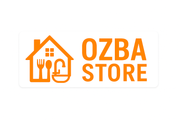Related
- Regular price
- $9.99 USD
- Regular price
-
$12.00 USD - Sale price
- $9.99 USD
- Unit price
- / per


- Regular price
- $1,050.00 USD
- Regular price
-
$1,150.00 USD - Sale price
- $1,050.00 USD
- Unit price
- / per
- Regular price
- $18.98 USD
- Regular price
-
$0.00 USD - Sale price
- $18.98 USD
- Unit price
- / per


- Regular price
- $15.69 USD
- Regular price
-
$18.11 USD - Sale price
- $15.69 USD
- Unit price
- / per


- Regular price
- $14.00 USD
- Regular price
-
$16.16 USD - Sale price
- $14.00 USD
- Unit price
- / per
Premium Heating Elements: A Comprehensive Product Guide
Heating elements are the heart of many household and industrial appliances. By converting electrical energy into heat through resistance, they provide reliable temperature control in water heaters, ovens, dryers, and more.
Watch this video to learn more about how heating elements work in water heaters:
:contentReference[oaicite:0]{index=0}
Product Category Features
Material Composition
Most heating elements use nickel-chromium (NiCr) alloys for high-temperature tolerance, stainless steel for corrosion resistance, or ceramic cores for electrical insulation and even heat distribution.
Power Ratings
Available in wattages ranging from a few tens of watts (for small immersion heaters) up to several kilowatts (for industrial ovens), ensuring you get the right heat output for your application.
Shape & Form Factor
Choose from tubular, coil, strip, cartridge, or flanged designs to match the mounting style and space constraints of your appliance.
How to Choose and Use Heating Elements
Determine Required Power & Voltage
Check your appliance’s electrical rating plate and select an element whose wattage and voltage specifications align exactly to avoid underheating or electrical overload.
Select the Appropriate Material
For wet environments (water heaters, humidifiers), opt for stainless steel; for high-temperature applications (kilns, ovens), NiCr alloys are best; for precise temperature control, ceramic-insulated elements offer superior stability.
Installation & Maintenance
Always disconnect power before handling. Ensure firm mechanical mounting and secure, corrosion-resistant electrical connections. Inspect periodically for scaling or burnout, and replace at the first sign of damage to maintain efficiency and safety.
Keywords: heating element, electric heating element, immersion heater, tubular heating element, NiCr heating element, oven heating element, dryer heating element, water heater element, stainless steel heating element, high wattage heating element
Filter and sort
- Regular price
- $9.99 USD
- Regular price
-
$12.00 USD - Sale price
- $9.99 USD
- Unit price
- / per
- Regular price
- $9.99 USD
- Regular price
-
$12.00 USD - Sale price
- $9.99 USD
- Unit price
- / per
- Regular price
- $1,050.00 USD
- Regular price
-
$1,150.00 USD - Sale price
- $1,050.00 USD
- Unit price
- / per
- Regular price
- $1,050.00 USD
- Regular price
-
$1,150.00 USD - Sale price
- $1,050.00 USD
- Unit price
- / per
- Regular price
- $18.98 USD
- Regular price
-
$0.00 USD - Sale price
- $18.98 USD
- Unit price
- / per
- Regular price
- $18.98 USD
- Regular price
-
$0.00 USD - Sale price
- $18.98 USD
- Unit price
- / per
- Regular price
- $15.69 USD
- Regular price
-
$18.11 USD - Sale price
- $15.69 USD
- Unit price
- / per
- Regular price
- $15.69 USD
- Regular price
-
$18.11 USD - Sale price
- $15.69 USD
- Unit price
- / per
- Regular price
- $14.00 USD
- Regular price
-
$16.16 USD - Sale price
- $14.00 USD
- Unit price
- / per
- Regular price
- $14.00 USD
- Regular price
-
$16.16 USD - Sale price
- $14.00 USD
- Unit price
- / per
Items 1 to 5 of 5 total





